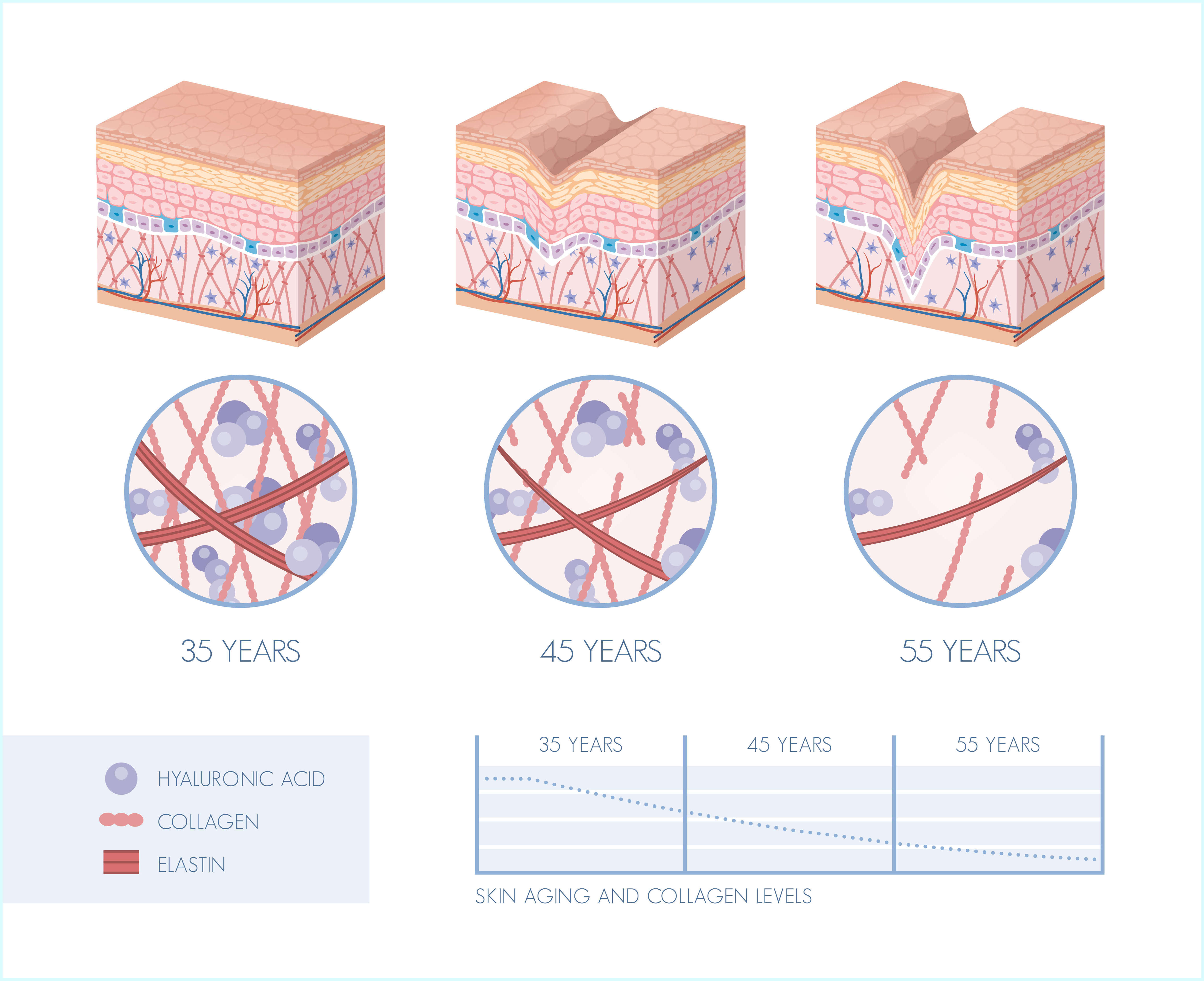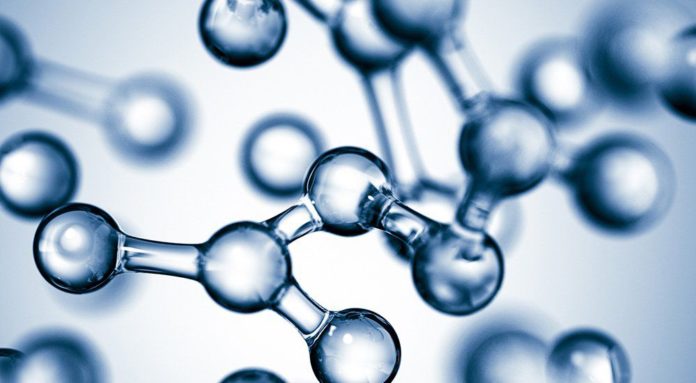There’s only one ingredient you truly need if you want plumper and smoother skin with less fine lines and chronic dry patches, and that is Hyaluronic Acid — one of the most potent weapons for preserving youthful skin. It can be found in many skincare products from cleansers to serums to sheet masks, but what exactly is it and how does it work? Read on to find out..
What Is Hyaluronic Acid?
Hyaluronic acid (or HA for short) is a naturally-occurring clear, gooey substance in skin known for its stunning capacity to attract and hold onto 1000 times its weight in water. In other words, it functions as a “humectant” meaning it works like a sponge to help skin retain water and leave it plump and dewy.
Hyaluronic acid benefits for skin
- Deeply hydrates dry skin.
- Plumps and tightens skin.
- Reduces the appearance of fine lines and wrinkles.
- Reconstructs connective tissue.
- Treats Acne Scarring.
- Encourages production of collagen.
- Adds volume to the face and lips when used as a dermal filler

As skin ages, it becomes drier as its ability to retain water lessens, which results in loss of firmness and fine lines. When you put HA back into the skin — you’re keeping skin nourished, which ultimately helps keep skin tight and supple. It’s basically the fountain-of-youth in molecule form.
There’s even scientific research backing hyaluronic acid’s effectiveness. A 2014 study found that after just two weeks of treatment, Nano-hyaluronic acid decreased the depth of wrinkles, enhanced skin hydration and elasticity, and reduced skin roughness.
What is Nano HA?
In 2002, a Japanese scientist developed a method to reduce hyaluronic acid molecule to nano size so they were small enough to be able to cross the skin barrier.
Who should be using hyaluronic acid?
Hyaluronic acid is incredibly gentle on skin, and helpful for all skin types, even the most sensitive, redness-prone skin as it helps calm skin, whilst protecting it with its antioxidant properties. Unlike retinol, hyaluronic acid can be safely used topically during pregnancy.
I have oily skin, do I still need it?
Yes, definitely! Oily and combination skin types still need hydration, and it’s very common for oily skin to peel and feel dehydrated because of the harsh ingredients often used to control oil—the lightweight formulation of hyaluronic acid is perfect as it feels weightless on the skin, and will not clog your pores.
What ingredients does hyaluronic acid work best with?
1. AHAs/BHAs – Chemical exfoliants such as AHAs and BHAs can be pretty strong, so combining them with hyaluronic acid is a great way to replenish the skin at the same time to make sure that the acids aren’t too harsh on the skin. The only exception would be acids with low pH levels, like glycolic acid, because it may degrade the hyaluronic acid and make it ineffective.
2. Vitamin A – Retinal (one of the many forms of vitamin A which has been clinically-proven to work up to 11 times faster than retinol) and hyaluronic acid are both powerful anti-agers so using them together can really amp up their effectiveness. A study published in 2011 Journal of Cosmetic Dermatology found that using retinal and hyaluronic acid together significantly improves overall photoaging, ptosis and hyper-pigmentation.
3. Vitamin C – Vitamin C and HA are two repairing ingredients that are frequently found in skincare products, both of which provide skin with powerful anti-aging benefits. A study published in 2013 Journal of ISRN Dermatology found that an anti-aging skincare routine containing hyaluronic acid and vitamin C significantly reduces fine lines and wrinkles, and improves skin texture, as well as elasticity, without notable adverse effects.
How do I choose the right product?
To get the most bang for your buck, look for a formula that contains at least 1% hyaluronic acid. If it only includes 0.5% or less, you may not get the best efficacy. Also, look for ‘sodium hyaluronate’ early in the ingredient list, and other hydrating ingredients like ceramides, peptides, niacinamide or other antioxidants.
What’s the right way to apply hyaluronic acid?
According to the experts, the star ingredient actually needs to be applied to damp skin in order to work. Hyaluronic acid is a moisture magnet and doesn’t contain any water itself, so the more moisture you combine it with, the better it performs.
Once you’ve cleansed, skip toweling off and reach straight for your HA. Once HA comes into contact with water, it knows what it’s doing and your skin will end up supremely hydrated and plumped.
After that you’ll just need a moisturizer (if you are using a “serum”) to seal the hyaluronic acid serum into your skin and SPF, and that’s a wrap on your skin-care routine.
Serums, creams and lotions enriched with HA act as a perfect makeup primer after morning application, and we also love the idea of allowing your skin to hydrate as you sleep.
Ready to load up your skin with HA? Below, a few of our favorite skin-quenching formulas to try:
- The Ordinary Hyaluronic Acid 2% + B5 Serum. Shop Now on sephora.com ($6.80).
- Neutrogena Hydro Boost Serum. Shop Now on ulta.com ($26.50).
- Peter Thomas Roth Water Drench Hyaluronic Cloud Cream. Shop Now on sephora.com ($22).
- Dr. Dennis Gross Skincare Hyaluronic Marine Booster. Shop Now on sephora.com ($68).
You may also like
- 3 Common Hyaluronic Acid Mistakes You Might Be Making
- Why Ceramides Should Be In Every Dry Skin Routine
For more on fashion & beauty, follow Major Mag on Instagram and Pinterest.
